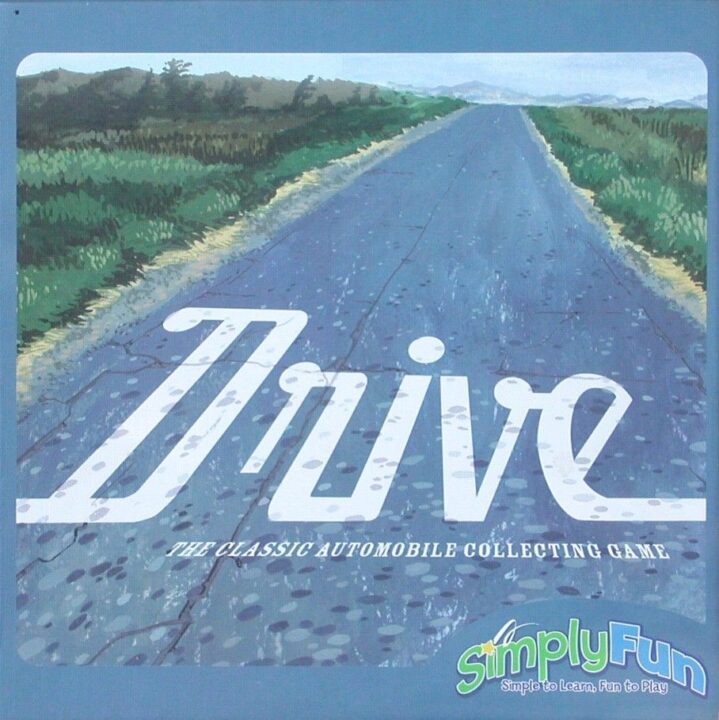Ever had the urge to prove you’re the best driver in the room, but also want to avoid actually wrecking your friend’s car? Well, that’s where this review comes in! I roped my pals into playing Drive, and survived to tell the tale. Let’s see if this speedy little board game is worth a spot on your gaming shelf—or if it should be stuck in reverse.
How It Plays
Setting up
First, spread out the track board and hand each player a car token. Shuffle the deck of cards and give everyone their starting hand. Put the fuel tokens and bonus tiles nearby, within reach of my snack-holding hand. Decide who goes first. I lost rock-paper-scissors, as usual.
Gameplay
On your turn, play a card from your hand to move your car, boost, or use a sneaky trick. You can block rivals, force pit stops, or grab bonus tiles. Sometimes I tried to look like I had a plan, but mostly I went for chaos. Keep an eye out—other drivers will mess with you if you lead the pack too far.
Winning the game
The first player to roar across the finish line wins. But watch it—last time, I lost my lead in the final curve thanks to a well-timed oil spill card. The game rewards smart card play and gutsy moves, so don’t get too comfy in first place!
Want to know more? Read our extensive strategy guide for Drive.
Game Mechanics and Rules Clarity in Drive: Smooth Roads or Potholes Ahead?
I sat down with my friends last Friday night, snacks in hand and hopes high, ready to play Drive for the first time. You can tell a lot about a game from how easy it is to explain, and Drive managed to keep our attention while I butchered the opening rules explanation. I appreciate when a game manual doesn’t look like a tax booklet from 1998, and thankfully, Drive walks that fine line. The rulebook has big fonts, useful diagrams, and enough bold text to make it seem like I’m being yelled at by an excited car salesman—just the way I like it.
The game uses a card drafting system where you pick different types of moves each turn. It’s like ordering off a menu, but your friends keep grabbing the last slice of pizza before you do. This mechanic keeps things spicy, with enough choices to make you feel clever but not overwhelmed. I love that every player gets a real chance to plan, rather than just relying on drawing the right card and praying to the cardboard gods. Balance-wise, Drive feels fair. Sure, sometimes you’ll crash into the wall because your buddy took your only good move, but it’s not because of some random dice ruining your night.
As for the rules, we only had to look up one thing (how to handle ties when two cars cross the finish line at the same time). That’s a huge win in my book. If a game needs a FAQ before you finish your first turn, it usually goes back on the shelf. Drive gets you rolling fast and keeps you there.
Next up, I’ll tell you if racing your friends in Drive feels more like friendly banter or a demolition derby—so start your engines for Player interaction and competition level!
Player Interaction and Competition in Drive: Buckle Up for Head-to-Head Fun
The game Drive puts you in the fast lane of player interaction. This isn’t one of those games where everyone is off doing their own thing, pretending to care about other players while secretly scrolling through their phones. No, Drive makes you sit up, pay attention, and pray your friends don’t mess up your clever moves. You’re always watching what they do, because their choices will either help or totally block your path to victory. In our last session, Pete tried to outmaneuver me by cutting me off just before the finish—he may have looked innocent, but I saw the evil glint in his eye. The game encourages sneaky tactics and well-placed jabs, so if you’re sensitive about being thwarted, maybe it’s time to toughen up or risk becoming the group’s designated “easy target.”
Competition in Drive feels tight, fair, and tense. No one runs away with the game thanks to runaway luck or broken cards. You have to think, adapt, and sometimes take a risk or two, but you also can’t win just by rolling lucky or hoping your friends forget you exist. I always felt like I had a shot, right up to the last turn. The competition stays alive until the very end, which led to a lot of breathless trash talk and desperate moves in our games. It’s a punchy, direct competition that leaves friendships bruised, but not broken.
Next up, I’ll take you under the hood to see if Drive’s looks and build quality match its high-octane gameplay—because nobody wants to race in a cardboard lemon!
Artwork and Component Quality in Drive: Does It Look as Good as It Plays?
So, let’s talk bling. When I cracked open Drive for the first time, I expected that new board game smell, but I didn’t expect to be wowed by the shiny bits inside. The box itself has a sleek, race-track vibe. It just begs you to put on driving gloves—even if you don’t own any. There’s a boldness to the colors that kept my nephew distracted for a full five minutes (which, for a six-year-old, is an eternity).
The cards in Drive feel sturdy. I shuffled them enough times to make a casino dealer jealous, and not a single one got bent or frayed. The finish is smooth and makes you feel like you’re holding something high-quality. No cheap, papery nonsense here! The tokens and scoreboard pieces are chunky, easy to grab, and oddly satisfying to click together. If component dexterity was a sport, I’d be a champion by now.
The artwork itself is all about speed and movement. You can almost hear the screech of tires. The designers leaned into the racing theme hard, with everything from icons to backgrounds designed to make you want to yell “Vroom!” Only complaint: the player colors all look great, but when my colorblind friend joined in, he had to ask for help every turn. Not the end of the world, but it could use some tweaks for accessibility.
All in all, Drive scores high marks for the look and feel. If your friends judge games by the cover (and let’s be real, some people do), this one won’t let you down. But does it keep up the pace play after play? Get ready—next section, we’re putting Drive’s replay value and game length through the gears!
How Many Laps Can You Handle? Replay Value & Game Length in Drive
Let me be honest. The first time I played Drive with my friends, we finished so fast I felt like I forgot to buckle my seatbelt. This game races by at about 25 minutes, whether you’re a full table or just a pair of drivers. I don’t know if this makes me extra competitive with my mates, but one game never feels like enough. We always end up saying, “Alright, best two out of three!”
Now, let’s talk replay value. Drive hits that sweet spot where you want to keep coming back. Each round feels different, thanks to the tactical choices. Nobody can just coast along—not if you want to win. One time, my friend tried a weird risky play. Didn’t work for him, but we all laughed so hard we nearly crashed (metaphorically. No actual cars or tables were harmed). The challenge to outthink your friends makes for a bunch of memorable moments.
But, if you’re looking for one of those epic games that lasts all evening, Drive is not your type of road trip. This game is short and sweet, perfect for filling a gap or as a ‘let’s settle this’ game before dinner. The fast plays mean everyone gets multiple chances to shine, and nobody leaves grumpy because their one shot didn’t pan out.
All in all, I absolutely recommend Drive if you want a zippy, punchy game night hit. It’s got replay written all over it, as long as you don’t mind the brisk lap times!
Conclusion
So, that wraps up my review of Drive. If you love sharp competition, clever moves, and games that don’t eat up your whole evening, Drive is a real treat. The rules are clear, the pieces hold up to snack-induced chaos, and you get tons of replay value. Sure, I wish the icons popped more for my half-asleep eyes, but that’s a small nitpick. It’s fair, it’s fun, and it’s earned a spot on my shelf (right next to my emergency snacks). If you love games where skill wins out and nobody can blame the dice, you’ll love it too. Just don’t expect to win by luck—my cousin tried, and you know how that turned out. Thanks for reading, and may your next game be less dramatic than my last family game night!


